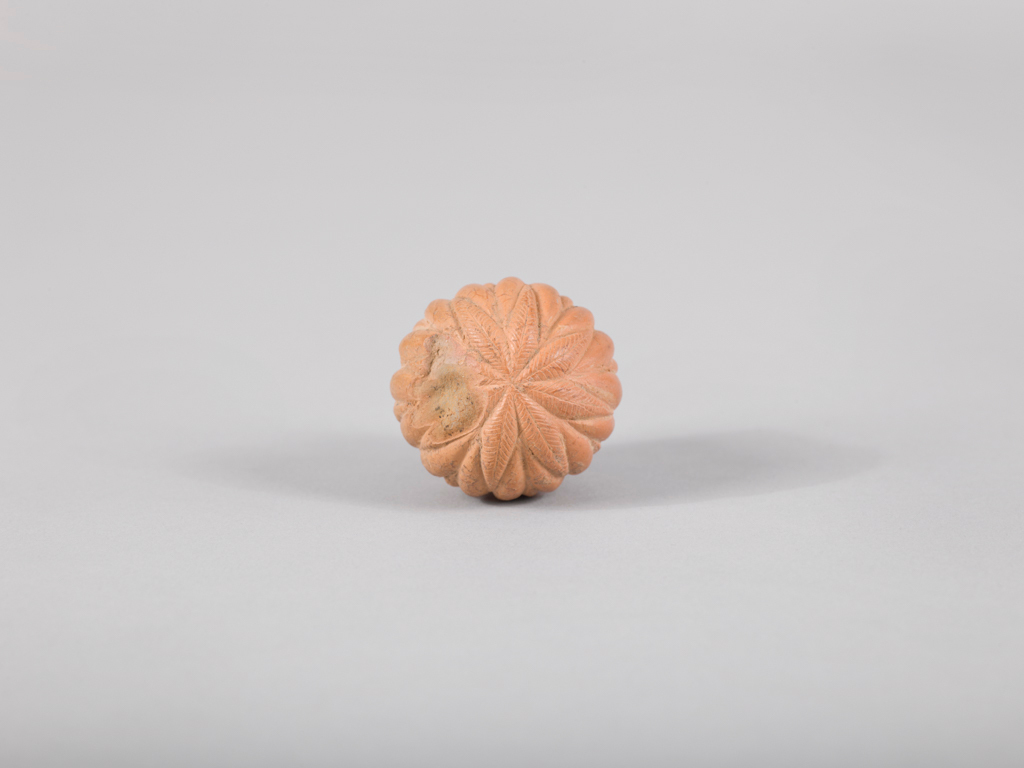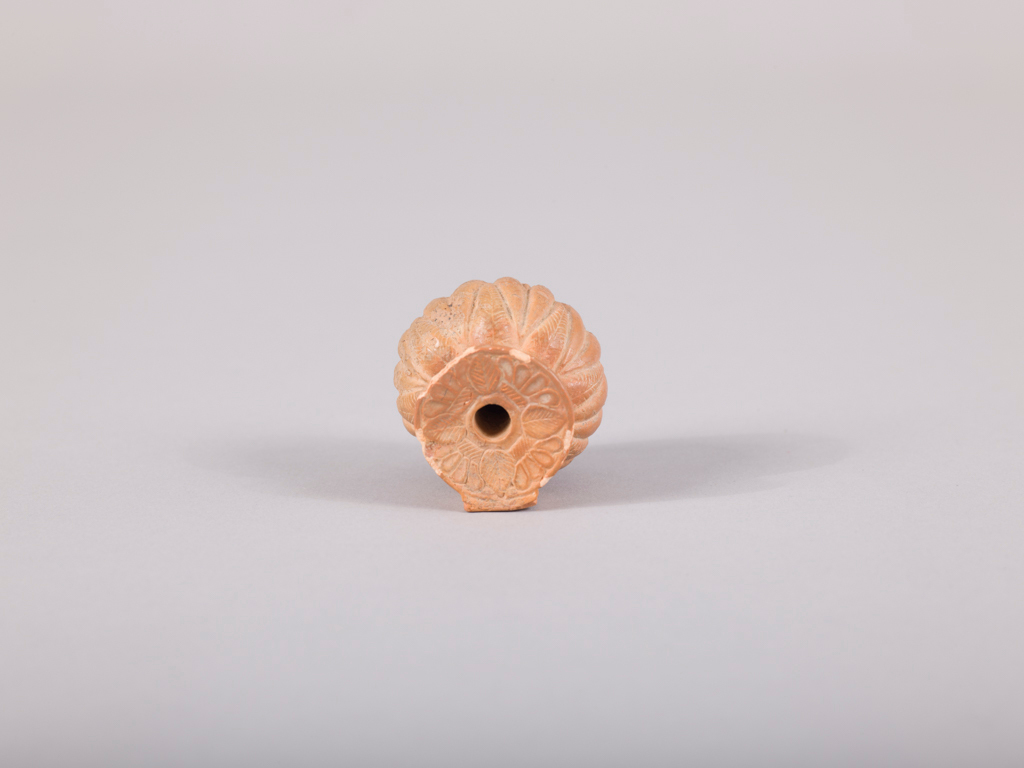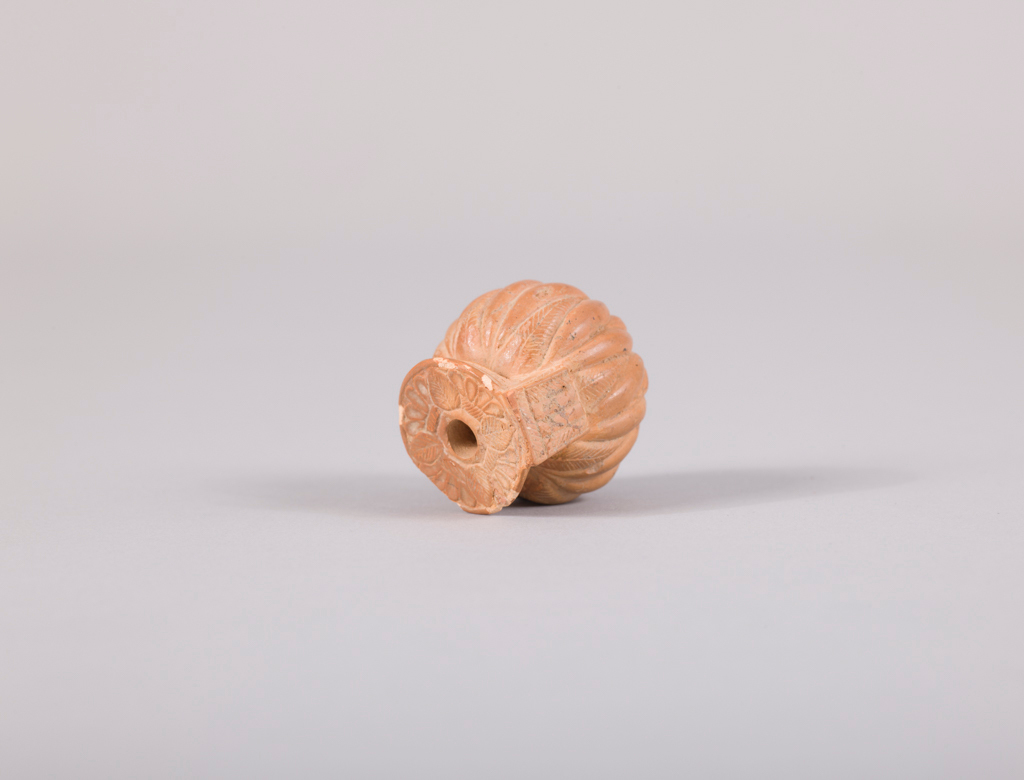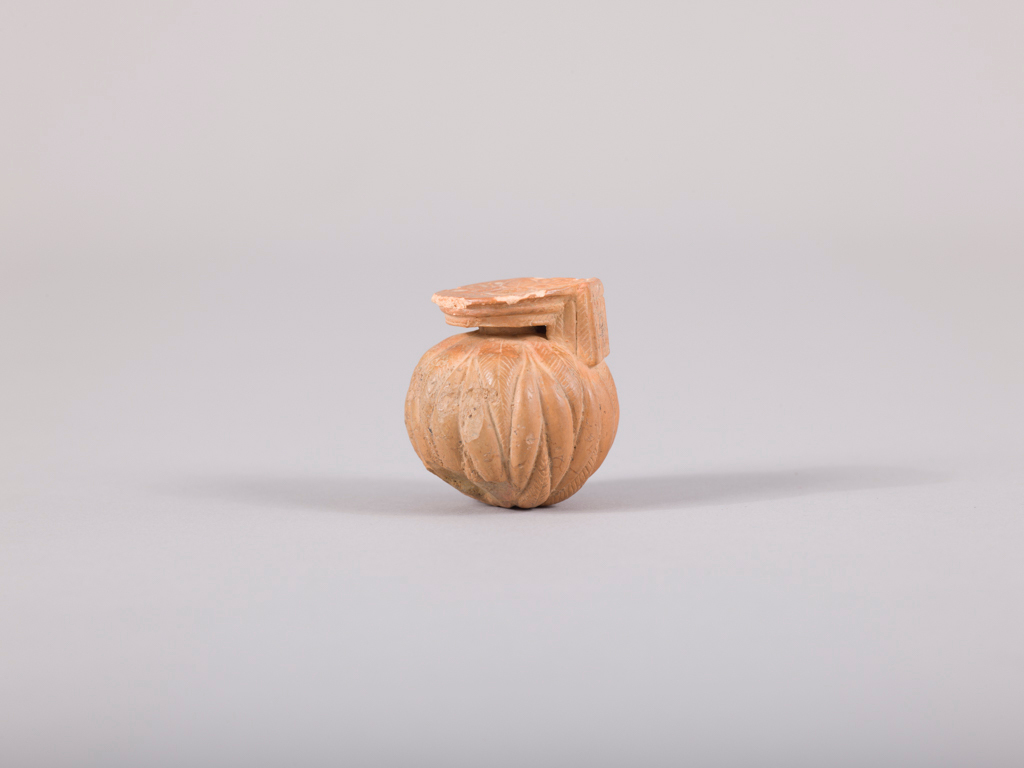Oil Vessel (arbyallos) with Decoration in Relief, 7th century BCE or later
Archaic Period
Terracotta
1 7/8 × 1 ¾ × 1 ¾ in. (4.8 × 4.4 × 4.4 cm)
3-D Object/Sculpture
1970-038 DJ
Learn More
Small enough to easily fit in your hand, this vessel is known as an aryballos (plural aryballoi) and was meant to contain perfumed oil for bathing. The terracotta vase has decoration in low relief on all surfaces and would have originally been suspended on a cord. Although aryballoi can take a variety of forms, the spherical shape, flat rim, and vertical handle of this vase are similar to Corinthian aryballoi, of which the Menil has two examples: X 935 and 1965-18 DJ. The three-dimensional relief, however, sets it apart from the Corinthian examples. The embellishments cover the entire surface, even the rounded base of the vessel. Framing the small mouth, the rim features four pointed and ribbed leaves at corners of a square frame with diagonal hatching. Four rounded drop petals emerge from the band between each leaf. On the body, eight pointed and ribbed leaves emerge from a central point at the bottom of the vessel, which alternate with undecorated pointed petals. The handle is embellished with vertical columns of ornament. The repeating and interlocking relief design emulates the geometric patterns on Archaic period (approximately 650–480 BCE) vases produced in East Greece, particularly on the island of Rhodes. The East Greek products primarily were made in faience, a glazed ceramic best known in Egyptian art. The distribution of these faience vases was spread across the ancient Mediterranean, but there are some terracotta examples with similar botanically inspired details.
Related collections and exhibitions









